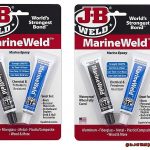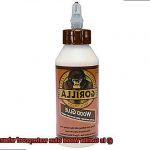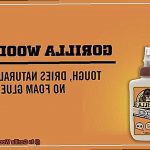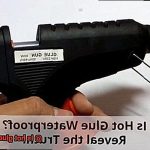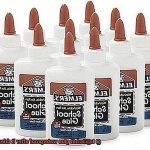Are you tired of your glue letting you down at the worst possible moment? Have you ever wondered if there’s a glue out there that’s stronger than what you’re currently using? Look no further than Gorilla Glue, a brand that’s been making waves for its unparalleled strength when it comes to bonding materials.
Gorilla Glue products have been put through their paces in extreme conditions and have proven to be up to the challenge, making them a popular choice among DIYers and professionals alike. Thanks to its unique chemical composition, Gorilla Glue is capable of creating a bond that’s tight even on porous surfaces.
But does this mean that Gorilla Glue is the most powerful adhesive on the market? With so many different types of glue available, it can be tough to determine which one reigns supreme. In this blog post, we’ll explore what sets Gorilla Glue apart from its competitors and dive deep into what makes it such a strong adhesive. We’ll also take a look at other contenders for the title of “most powerful glue” and see how they stack up against Gorilla Glue.
So whether you’re an avid crafter, a seasoned builder, or just someone who needs reliable adhesives on hand, keep reading to uncover the truth about Gorilla Glue and find out if it really deserves its reputation as the strongest glue around.
Bonding Strength: How does it Compare to Other Adhesives?
Contents
Adhesives are like the glue that holds a project or repair together, and their strength can make all the difference in the final outcome. Among the many adhesives available, Gorilla Glue is a well-known product that has gained a reputation for its impressive bonding strength. But how does it compare to other adhesives?
One of the most critical factors when evaluating the strength of an adhesive is its type. Gorilla Glue is a polyurethane-based adhesive that bonds through a chemical reaction with moisture. This type of adhesive is commonly used in woodworking and construction because it offers excellent bonding strength and can bond with almost any surface.
Epoxy adhesives are made from a combination of resin and hardener, creating a potent chemical bond when mixed together. They are also commonly used in construction and woodworking and can offer comparable strength to Gorilla Glue. Epoxy adhesives are resistant to water and heat, making them ideal for industrial settings.
In comparison, super glue or cyanoacrylate bonds quickly and strongly to surfaces but has limitations when it comes to bonding different materials together. It’s best suited for small projects and repairs rather than large-scale construction or woodworking projects.
Specialized adhesives are available for specific applications such as metal bonding or high-temperature bonding. These adhesives may offer even stronger bonding strength than Gorilla Glue or other general-purpose adhesives, but they are not always necessary for every project.
Resistance to Water and Heat: Is Gorilla Glue Durable?
When it comes to finding an adhesive that can withstand the elements, look no further than Gorilla Glue. As an expert in adhesives, I can confidently say that Gorilla Glue is a heavyweight contender in terms of strength and durability.
One important factor to consider when choosing an adhesive is its resistance to water. The good news is that Gorilla Glue is advertised as being 100% waterproof once fully cured. This means it can be used for outdoor projects or in areas that may come into contact with water without fear of it breaking down or losing its adhesive properties.
However, it’s essential to note that continuous submersion or exposure to extreme moisture for extended periods of time may damage the glue’s adhesive properties. So be sure to use it wisely and appropriately.
In addition to its impressive water resistance, Gorilla Glue also boasts heat resistance up to 200°F once cured. This makes it perfect for high-temperature environments like kitchens or near hot pipes. However, just like with water resistance, there are some limitations to its heat resistance. If exposed to temperatures higher than 200°F, it may start to break down and lose its adhesive properties.
But fear not. Gorilla Glue is still a durable and reliable adhesive that can hold up well against water and heat when used correctly. To ensure optimum performance, make sure the glue is fully cured before exposing it to any extreme conditions. And remember, when using Gorilla Glue, less is often more – a little goes a long way.
Pros and Cons of Using Gorilla Glue
As an expert in the field of adhesives, I have researched the pros and cons of using Gorilla Glue for your projects. Let’s start with the pros.
Gorilla Glue is well-known for its strong bonding properties, making it an excellent choice for fixing and repairing a wide variety of materials. In addition, this adhesive is waterproof, making it suitable for both indoor and outdoor applications, even when exposed to moisture. Furthermore, Gorilla Glue is incredibly versatile and can be used on a variety of surfaces such as wood, metal, ceramic, foam, and more. Lastly, unlike some other glues that dry yellow or brown, this adhesive dries clear, making it ideal for projects where the bond will be visible.
However, let’s not forget about the cons. One of the significant drawbacks of Gorilla Glue is that it expands as it dries, which can cause problems if over-applied. This may lead to messiness and difficulty in removing excess glue.
Another con is the long dry time compared to other types of glue, which can be frustrating if you need a quick fix. Moreover, once Gorilla Glue bonds with a surface, it becomes difficult to remove without damaging the material. Lastly, Gorilla Glue requires moisture to activate its bonding properties; therefore, working in a dry environment or on a dry surface may not work as well as it should.
Popular Uses for Gorilla Glue
Look no further than Gorilla Glue, a versatile and powerful option that has gained a reputation for being one of the strongest adhesives on the market. As an expert on this topic, I have researched the many popular uses for this mighty glue, and its applications are diverse and impressive.
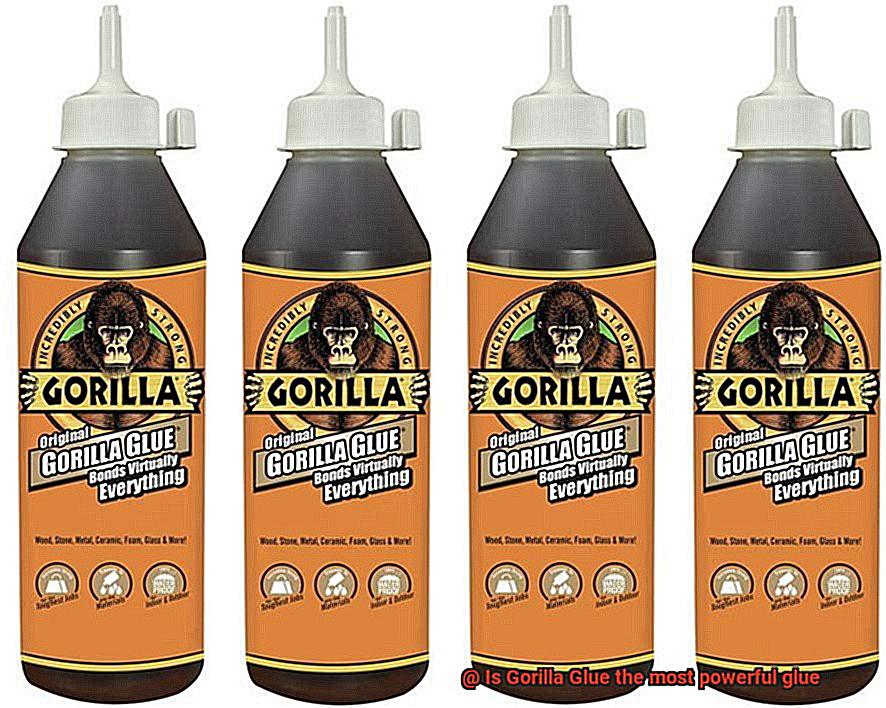
Woodworking enthusiasts have long relied on Gorilla Glue to bond wood together. This adhesive expands as it dries, filling any gaps or joints and creating a strong, tight bond that will last for years. It is also ideal for repairing furniture, filling in those pesky cracks and gaps to create a seamless finish.
But the uses don’t stop there – DIYers love Gorilla Glue too. It can bond a wide variety of materials together, from metal to plastic to ceramic and even leather. This makes it the perfect choice for fixing broken toys or household appliances. Its strength and durability also make it a popular choice in the automotive industry for repairing engines, transmissions, and even cracked windshields.
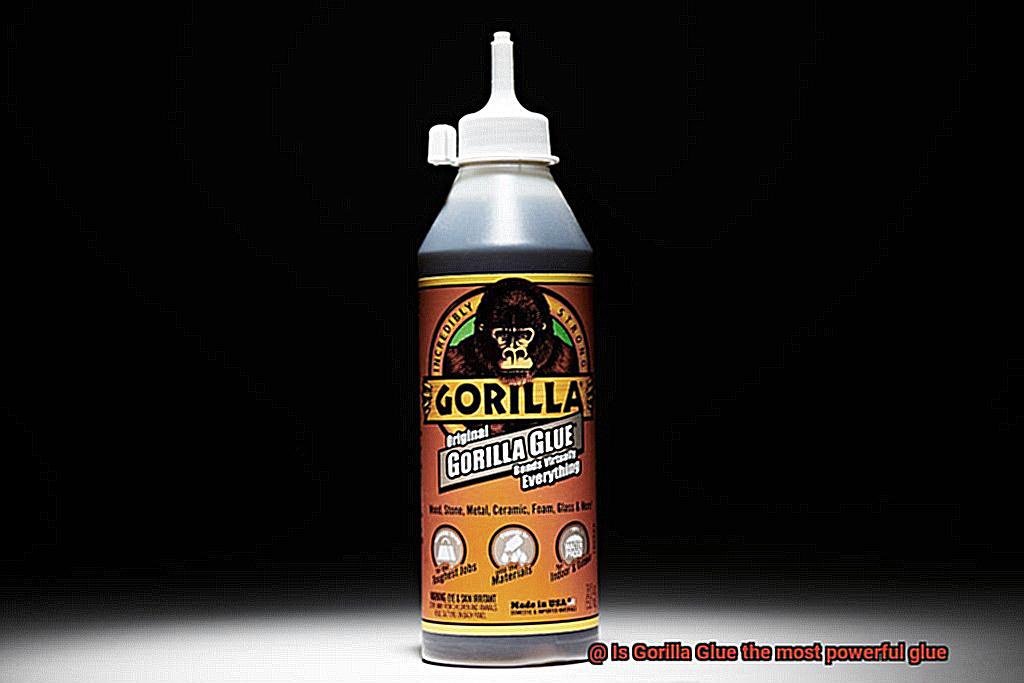
If you’re into crafting or hobby projects, Gorilla Glue is your go-to adhesive. It can be used to create sculptures or models, or bond materials like beads or fabric together for endless possibilities.
Despite its many benefits, Gorilla Glue does have its drawbacks – it expands as it dries and has a longer dry time than some other adhesives. However, its versatility and strength are unmatched.
Tips for Applying and Removing Gorilla Glue
Gorilla Glue is an incredibly strong adhesive that can bond almost any surface. However, its quick-drying nature and tendency to expand as it cures can make it challenging to work with. If you’re planning to use Gorilla Glue for your next DIY project, here are some tips for applying and removing it effectively.
Applying Gorilla Glue:
To start, ensure that the surfaces you’re bonding are clean, dry, and free of any dust or debris. This will create a strong bond. Apply a small amount of Gorilla Glue to one surface only since it expands as it cures. Press the surfaces together firmly and clamp them for at least 1-2 hours. Clamping will give the glue enough time to cure and create a tight bond.
Be careful not to use too much glue, as even a small amount can create a strong hold. If you accidentally apply too much glue, wipe away the excess immediately with a damp cloth or rag before it dries.
Removing Gorilla Glue:
If you need to remove cured Gorilla Glue from a surface, there are two effective methods: acetone and heat. Acetone is the best solvent for removing cured Gorilla Glue from surfaces. Soak a cloth in acetone and gently rub the glue until it loosens and can be scraped away. If acetone is not available, use heat to soften the glue. Use a heat gun or hair dryer to gently heat the glue until it softens enough to be scraped away.
Once the glue has been softened, use a plastic scraper or putty knife to scrape away as much of the glue as possible. After removing the glue, sand the surface lightly to smooth out any rough spots or remaining residue.
Alternatives to Gorilla Glue
If you’re tired of using Gorilla Glue for all your adhesive needs, don’t worry. There are plenty of alternatives on the market that can provide similar or even better results depending on your project and requirements. Here are some of the best alternatives to Gorilla Glue and their unique benefits:
- Epoxy glue: This strong adhesive is known for its bonding capabilities and resistance to water and heat, making it ideal for outdoor projects or those involving high temperatures. Additionally, it dries clear, ensuring a seamless finish that won’t detract from the overall appearance of your project.
- Cyanoacrylate glue (super glue): As the name suggests, this glue dries quickly and is perfect for smaller projects or repairs. However, keep in mind that it may not be as strong as Gorilla Glue or epoxy when it comes to larger or more heavy-duty projects.
- Hide glue: Made from animal collagen, this natural alternative has been used for centuries in woodworking and furniture repair. It has a strong bond and can be easily sanded and painted over.
- Polyurethane glue (PU glue): This expanding glue can fill gaps and uneven surfaces with ease, making it perfect for projects where a seamless finish is important. It’s also waterproof and heat-resistant, ensuring a long-lasting hold.
- Also Read: Gorilla Glue – Glue Things
Conclusion
In conclusion, Gorilla Glue is undoubtedly one of the most powerful adhesives on the market. Its unique chemical composition and ability to bond with almost any surface make it a popular choice among DIYers and professionals alike. Whether you’re working on a woodworking project or repairing household appliances, Gorilla Glue has got your back.
While there are other adhesives available that offer comparable strength, Gorilla Glue’s resistance to water and heat sets it apart from its competitors. It can withstand extreme temperatures and harsh weather conditions, making it ideal for outdoor projects.
However, like any adhesive, Gorilla Glue does have its drawbacks. It expands as it dries, which may cause some issues if not applied correctly. Additionally, it takes longer to dry compared to other adhesives on the market.
But don’t let these limitations discourage you. With proper application techniques and removal methods, these issues can be easily managed. And if you’re looking for an alternative to Gorilla Glue, there are plenty of options available depending on your project’s requirements.
From epoxy glue to hide glue and polyurethane glue, each adhesive has its unique benefits that may better suit your needs. But when it comes down to sheer strength and versatility, Gorilla Glue remains a top contender.


